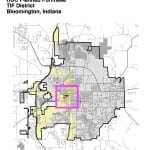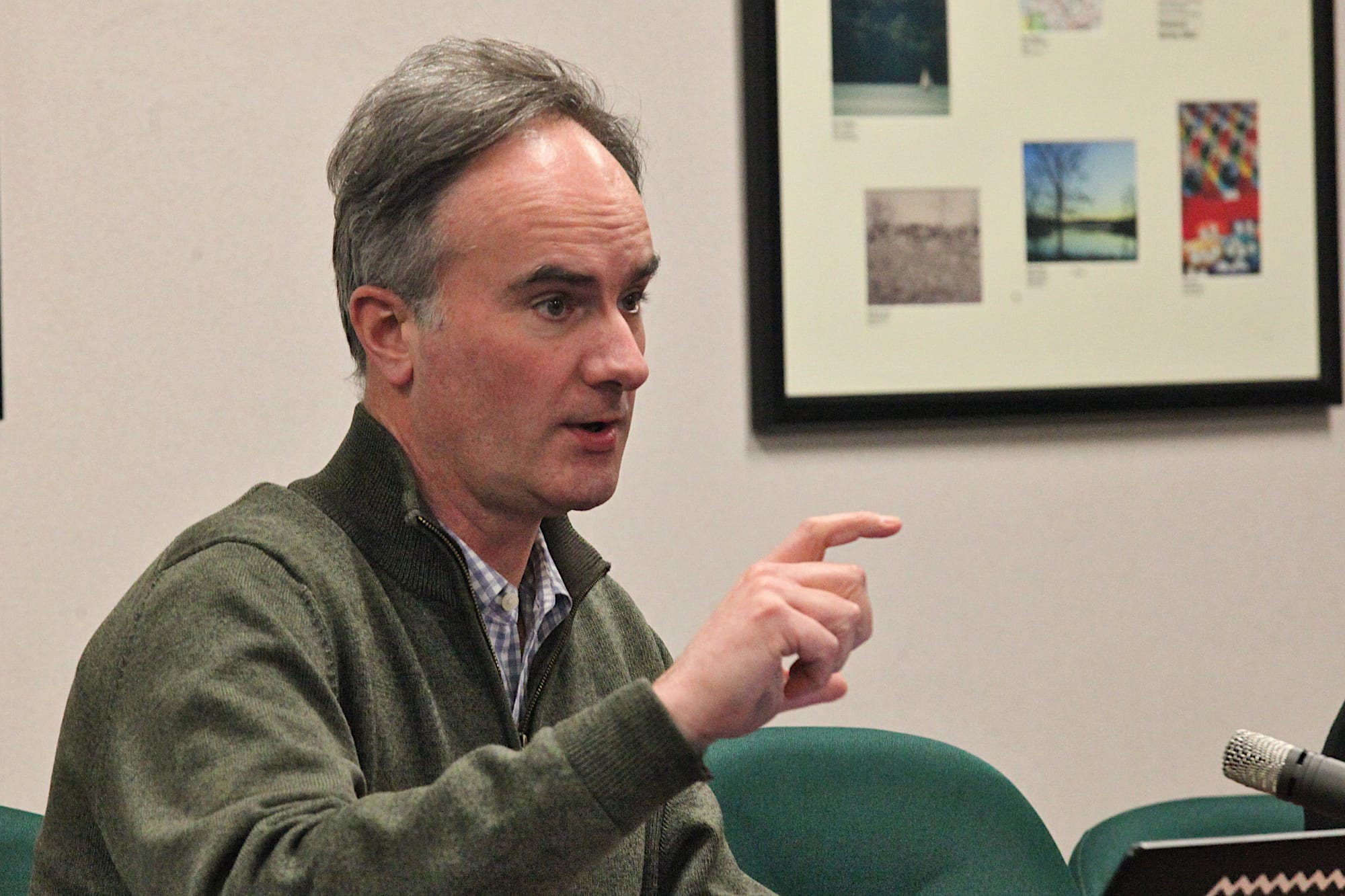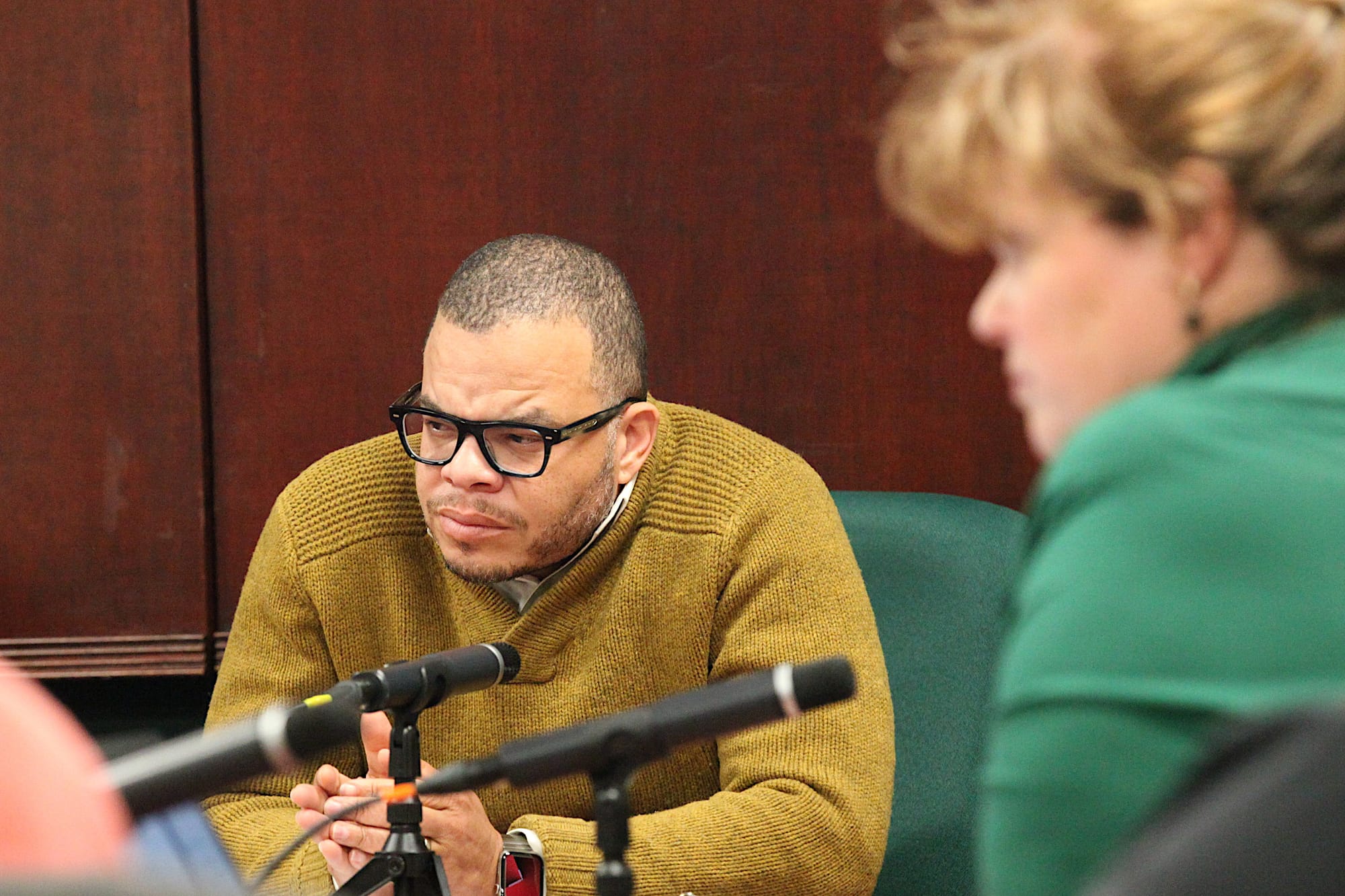$500K placeholder OK’d for master planner of hospital site redevelopment




At its regular meeting on Monday, Bloomington’s redevelopment commission (RDC) agreed to an amendment of the project description for the redevelopment of the hospital property at 2nd and Rogers streets, owned by Indiana University Health.
A $500,000 placeholder for a master planner was one addition to the project review form approved by the board. The other was an increase of the total project cost, from around $6.8 million to $10 million, to cover the cost of possible infrastructure improvements.
IU Health has agreed to sell the property to the city for $6.5 million, because once IU Health’s facility on SR 45/46 is completed, in 2021, it will be relocating to that new facility.
At Monday’s RDC meeting, Alex Crowley, director of Bloomington’s economic and sustainable development department, called the redevelopment of the hospital site, “arguably the most important economic development project in Bloomington for a century.”
The change sets the stage for possible selection and approval of a master planner at the RDC’s next regular meeting, on March 2. The specific amount of the contract with the master planner will be provided when the contract is agreed on, Crowley said. It’s expected to be less than $500,000.
Once selected, the master planner will engage a broad swath of the community, Crowley said, starting around April or so, through the end of the year. There will be complex ways of eliciting input, he said. About the work to be delivered by the master planner, Crowley said, “It will not tell us what to do, but provide a framework of what’s possible in the area.” The build-out would take 10 to 15 or even 20 years, Crowley said.
Compared to some earlier consulting work on the hospital site redevelopment, done by the Urban Land Institute in 2018, Crowley said it would be like the “ULI process on steroids.”
Besides the $500,000 for a master planner, the $10 million includes lines of $135,000 for consulting work done by the Urban Land Institute in 2018, $50,000 for land appraisals, $79,866 for due diligence with environmental assessment and $6,500,000 for the purchase of the land from IU Health in 2021. The remaining roughly $2.75 million does not have a line in the revised project review form.
Crowley told RDC members that the difference between amount in line totals and the $10 million figure would be used for possible infrastructure improvements to the site.
The source of funds to be used for the project is revenue from the city’s consolidated tax increment finance (TIF) district.
Assistant city attorney Larry Allen pointed out that what the RDC was approving was not an approval for the expenditure of funds. As RDC board member Eric Sandweiss put it, the approval of the amendment to the project review form was a “general assent to the direction” that Crowley had described.
Crowley said the master planner would be selected from respondents to couple dozen vendors who responded to a “request for information” (RFI). The final selection process, which involved RDC members, staff members, community partners and some city council members, is nearly complete, Crowley said.
RDC board chair Don Griffin drew out from Crowley the distinction between a master planner and an owner’s rep. Crowley said there would be a separate function for a master planner and an owner’s rep.
Doing a financial analysis of potential development scenarios would be a master planner function, not something the owner’s rep would do, Crowley said. The owner’s rep would focus in the initial phase on making sure the master plan doesn’t go off the rails, Crowley said. Longer term, the owner’s rep will be “selling the heck out of it,” Crowley said.
Allen said the main limitations on the use of the land making up the site were in the purchase agreement—it can’t be used by a competitor to IU Health—and the unified development ordinance (UDO).
The hospital site, will likely be subject to zoning map revisions in connection with the UDO update. At a mid-January meeting, the city’s plan commission ratified the text revisions voted on by the city council late last year.
The next step in the UDO update process is to adopt the zoning conversion map, which translates newly defined zoning district labels to their corresponding zoning districts in the updated UDO. But after the conversion map is adopted, the substance of the map will be revisited, because some of the newly defined zoning districts do not have any corresponding map areas. Examples of as yet unmapped zoning districts are R4 (residential urban) and MS (mixed-use student housing).
Another reason to revisit the zoning map is the hospital site on 2nd Street. That will mean a change in zoning from medical (“mixed use healthcare”) to something else.
After the RDC meeting on Monday, Crowley told The Square Beacon that the hospital site redevelopment was not a “neighborhood project,” but rather one that will have a significant impact on the whole city.




Comments ()